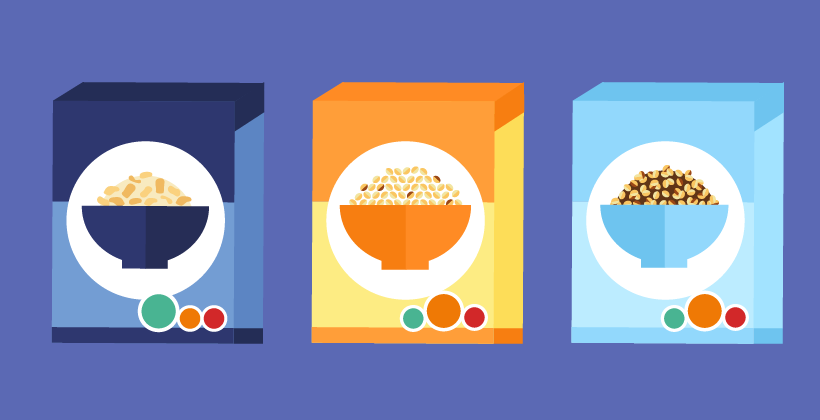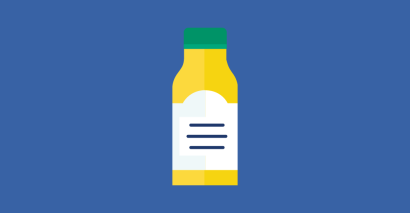EUFIC Forum n°2: Consumer attitudes to nutrition information and food labelling
Last Updated : 01 February 2005BACKGROUND
The long-term goal of EUFIC is to contribute to a behavioural change of consumers towards healthier and more balanced eating habits by communicating science-based information on food in an understandable and effective way. In that context it is important to understand the contribution and potential of nutrition labels in consumers’ decisions of choosing a healthy and balanced diet.
Desk research carried out by EUFIC in 2003 revealed that a certain amount of consumer research is already available concerning consumer understanding of the nutrition label content and format (both current format as well as tested alternatives). But this exercise also identified significant gaps. There is little research on the role of labels in:
- consumer motivation to read labels,
- possible interventions to increase motivation and usage especially from “non users” ,
- relationship between label reading and food intake,
- total nutrition/healthy lifestyle communication programmes.
Equally, most of the research that had been done focused on the UK (with some research in the Nordic countries, and France). Multi-country data was scarce and, in particular, little was known about southern Europe.
EUFIC therefore set out to obtain additional insight into the relationship between consumers and nutrition labels on food. Specifically, the research was intended to explore:
- Consumer attitudes towards the subject of nutrition.
- Consumer motivation to read and act on nutrition labelling and ways in which this can be improved.
- Understanding of nutrition labels and again, how this might be improved.
- The role and contribution of labels to nutrition communication in general.
METHODOLOGY
Qualitative research was performed, as recommended methodology, with focus groups/creative workshops of 8-10 consumers of ca 3.5 hours each. To ensure sufficiently relevant consumer feedback the focus groups were selected according to a broad sociodemographic profile but also built around four “relationships” with nutrition:
- People who do value nutrition, without being experts (men/women, 20-45, w/w.o. children/job) : “actives”
- People who try to “eat well” but who do not actively know much about nutrition (women 20-45, w/w.o. children/job) : “passives”
- People who don’t know or don’t care much about nutrition, (men/women, 20-45, w/w.o. children, w/w.o. job) : “resisters”
- People who would like to know more about nutrition (men/women 50-70) : “searchers”
All respondents were from the middle social groups BC1C2s. Stimulus material included a broad range of packaged food products, local and international manufacturer and retailer brands: 30-50 products per country. Enlarged copies of the nutrition labels were used for clarity.
SCOPE
Focus groups for each of the four consumer sub-groups were organised in:
- France (Lyon)
- Germany (Hamburg)
- Italy (Milano)
- UK (London)
While not entirely representative for all of Europe, these countries give a good mix of population mass, different eating habits and nutrition “culture” in Europe.
Though qualitative, the research identified a number of issues and pointed to some surprise conclusions, which make it an important contribution to the current debate about the role of labelling.
RELATIONSHIP WITH NUTRITION
Across all the groups, and the four nationalities, there is an understanding that over-indulgence in food leads to health issues. People also believe that they can, if they want to or need to, take personal responsibility for ‘healthy eating’. That many do not largely stems from an unwillingness to give up food that they consider pleasurable, rather than a lack of desire to be healthy.
Whilst all consumers seem to be aware of some nutrition terminology (calories, fat, carbohydrates etc), few had a genuine understanding of the full range. Calories are widely understood, but kilojoules are not. There is considerable confusion between additives and nutrients and, especially, between kitchen and technical terms. Sodium vs. salt, for example, or fat vs. lipids. This was particularly so in France and Germany.
Consumers respond well to such terms as ‘light’ and low-fat’, but these are indistinct terms and are also restrictive and negative. Most people lack the discipline to make food choices based on purely nutritional information.
All in all, consumers are put off by what they also call the “nutrition system”; whilst at the same time they appreciate the benefits of nutritious healthy eating. The “nutrition system” is seen as complex and technical and somehow removed from eating which is, by contrast, simple and immediate.
Barriers mentioned are that there is too much small print, experts rarely seem to agree (a source of great irritation), there is little help readily available to explain the complex terminology, and there is a general feeling of negativity and repression about something, eating, which should be a pleasure.
While all consumers do agree that nutrition is important, there are significant differences between the ways in which the various audiences approach the subject. The key consumer dynamics in the groups revolved around the tension between sacrifice and pleasure on the one hand, and control and resignation on the other.
NUTRITION INFORMATION
Consumers were asked about the sources from which they obtained their nutritional information. In the UK nutrition is much more present via the media and marketing. For the countries other than the UK, the most ever-present source is traditional understanding, lore and received wisdom. Thereafter, the most relevant source is marketing. Marketing, which includes advertising, acts both as a shortcut to consumer understanding and as a clear driver to action. People read on-pack nutrition claims and their purchasing is influenced by them. The simpler and clearer the claims, such as ‘fat free’ or ‘1% fat’, the more they are assimilated. Although consumers do draw a distinction between objective facts (such as calorie counts) and marketing claims (‘can help lose weight’), certain brands or products (such as those with a ‘Light’ tag) are seen intrinsically as healthy and their nutritional value not much questioned.
The media also ranks as an important source, although the sheer range of publications and programmes combined with an absence of consensus tends to overwhelm and confuse.
Public and private education and information campaigns often are more successful in embedding messages. Slogans such as ‘Five a day’ and diagrams such as food ‘triangles’ were spontaneously recalled. However, there is a lack of consistency between generations and cumulative impact seems to be sacrificed on the alter of nutritional fashion.
Finally, where a physical condition has necessitated action, some consumers have sought advice from professional nutritionists. Diets aimed at, for example, reducing cholesterol have led to people taking more of an interest in both the composition of their food and the labels that appear upon it. This tends to be a minority, however, and is largely driven by medical need.
The nutrition labels are spontaneously cited as a source of nutritional information in all groups in all countries, but only few consumers say they really ever look at them.
WHAT CONSUMERS EXPECT ABOUT NUTRITION COMMUNICATION
Consumers would like to understand better the language and the terminology of nutrition, for example calories vs. kilo joules. Also they would like to find a reliable source of information, where they can relate the information to themselves, to their way of living and eating.
They want the communication to help them find a way to manage nutrition without bad feelings. For communicators, the challenge is therefore to pass from a scientific method to a practical model allowing consumers to apply some of the ground rules to their daily life. They must build a passage and provide the “key” and they need to motivate consumers that it is possible and well worth it.
NUTRITION LABELS
Context
While Nutrition labels are present in all four markets, they are not equally widespread across products and categories in all markets. In the UK, consumers expect them to be on the packs.
In France, Italy and Germany nutritional labelling seems more limited. Most consumers do not specifically ask for them and they are not concerned if there are no labels. When concerns do exist, consumers mostly mention the right to information and that one cannot compare without nutrition labels.
Key Challenges for the current Nutrition Labels
Little authority
The bottom line is that few consumers look at labels at all. When they do, subgroup information is rarely read unless the person has a specific condition such as diabetes or high cholesterol. It is common for consumers to confuse the ingredients list with the nutrition label, and the nutrition label is often seen as part of the brand rather than a method of assessment. In any case, most consumers have a ready-formed impression of the healthiness (or otherwise) of the brand and this view is not influenced by the information on the label. It is, therefore, redundant.
Little understanding
The research suggested that the label confronts the consumer with everything they find difficult and negative about nutrition. The terminology is complex, with some of the information seemingly redundant. Calories are the most established value across all targets, and all countries. But what is the difference, for example, between calories and kilojoules? Carbohydrates, for example, can be mentioned, but not sugar; or fat, but no saturated fat. And what is the difference anyway? The labels do not contain any explanations and, importantly, more often than not do not provide the necessary signposts to direct people to where they might find out.
Even when armed with the information, people find it difficult to relate this to their day to day eating experience. Only few consumers know the average needs in calories per day. Values in grams per 100g or per portion cannot be put into perspective.
Recommended Daily Allowance (%) and Guideline Daily Amounts do help but are not foremost in consumers’ minds and need explaining. In general consumers feel there is too much calculation to be done and they don’t like it or feel they lack the tools to do so
Little motivation
Consumers do accept that there are certain limitations on a pack but they are quite upset about the lack of legibility (too small, tone-on-tone printing, too many languages…).
The lack of legibility and a perceived lack of relevance ensure that consumers focus on the aesthetics of the label (is it attractive?) rather than the importance of the label. There is little motivation, therefore, to use the label as a way of accessing the world of nutrition or as a tool to manage a healthy diet.
ELEMENTS THAT NEED TO BE ADDRESSED
The research indicated a number of ways in which nutrition labels might be changed to overcome the problems of lack of authority, understanding and motivation. Broadly, these came in three areas:
- Consumers want a concise, clear and readable label, not necessarily identical but “easy to navigate” and offering “help”. The information must be clearly presented, well-structured and consistent. But consumers also accept that not all can be done on the label.
- The nutrition label must have a stronger status of authority, a clear sender. Its role and usage must be better defined.
- The role of the nutrition label must be “activated” as an access point to help with their diet. Informing is ok but the key point is what to do with this information. This issue of interactivity comes up in just about all the groups. Consumers felt that the label is very complex and they would like to have more help from a similarly objective source. Suggestions that came up were websites, peel-off labels with additional labels, reference booklets etc.
CONSUMER SUGGESTIONS FOR IMPROVEMENT OF THE NUTRITION LABELS
Consumer requirements for a good nutrition label were very similar across all groups and countries:
- Consumers need a nutrition terminology they can relate to. Not too much information, but hierarchised, ranked information so they know what’s important. They want clear references that allow them to link the information to their diet and show how to transform the information into action.
- Consumers want help to improve their understanding (references, symbols, www...). They accept that not all can be done on the label. The nutrition label must be “activating” and motivating to read and be understood as a tool to help them manage their diet. Again, a good supporting reference is important.
- Consumers want clear and readable labels, not necessarily identical but at least with some consistency, uniformity across products. They don’t mind a link with the product (brand colours, typography…) but ideally with clear presentation and stand-out.
- The label design should be simple, attractive and well-structured. Columns, highlighting, colour bands (ideally same colour for same nutrient) are deemed to be helpful as long as they are consistent and reduce confusion.
- The labels should be a “zone of trust and authority”, i.e. there should be a clear sender, and the accuracy should be beyond questioning. There were various opinions in the group but most felt they should be endorsed by a neutral, trustworthy official body (national or EU).
These improvements would be well received across all the countries surveyed. Bad labels look remarkably similar across all the markets, which suggests that the solutions could also be similar.
CONCLUSION
The label is one of the most visible nutrition contact points. Much work needs to be done to make the nutrition label a useful tool for consumers and to motivate them to read the information. More figures, longer lists, denser information will not, our research suggests, have the desired effect.
Consumers need a manageable reference, endorsed by a suitably trustworthy authority. They need information that is simple, easy to use and relates to their daily nutritional needs.
Consumers want nutrition to be a part of their daily lives. Most importantly they need greater knowledge in order to make use of the nutrition label and to integrate this information into their daily dietary management.
This is a true challenge for communicators and educators.



